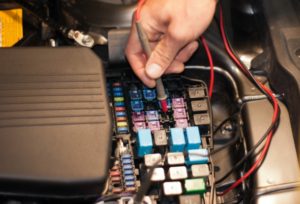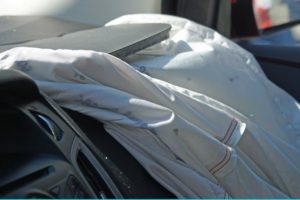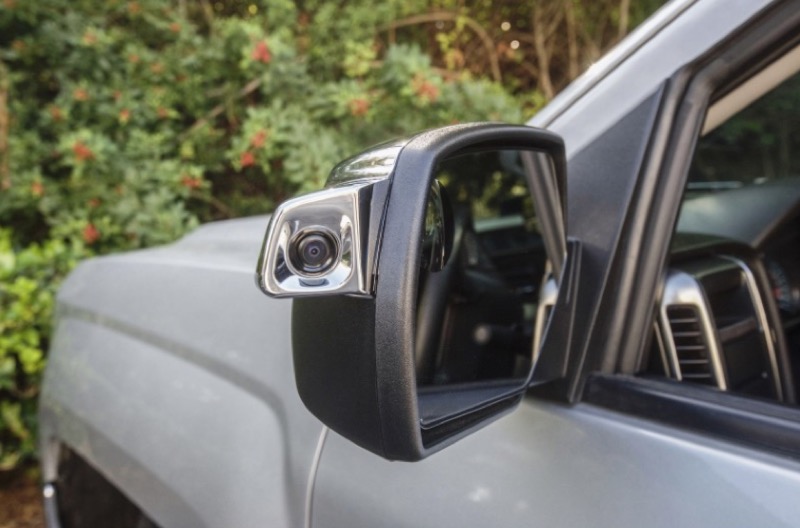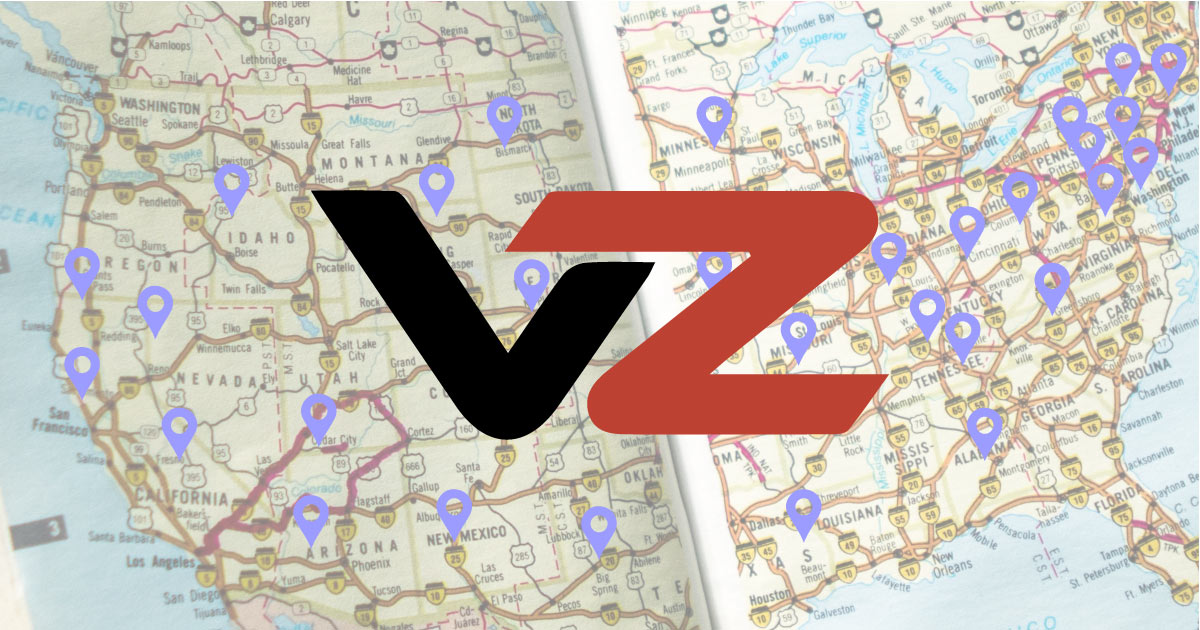ADAS, or Advanced Driver Assistance Systems, are available for purchase in your current ride. You can find these from a few trustworthy and authorized online merchants. But the best place to purchase both the equipment and installation of ADAS tech is your local VZAN-affiliated retailer. They stand behind the hardware and their installations. In the world where we live today, we can often find an “expert” on YouTube to help teach us something. Most of the time, the information proves helpful and warranted. But there are times when an expert must be brought in. Toilet bowl overflowing? First try the technique offered on YouTube with a plunger and then maybe move up to a toilet snake. Still overflowing because of a backed-up sewer main? Time to call in the expert. Same with ADAS and your vehicle’s electrical system.
ADAS and The Specialist
 Some safety equipment can be installed by the end user. For example, the small aftermarket disk-shaped mirrors that adhere to your stock side-view mirrors. But installing specialty aftermarket ADAS equipment needs specific training and calibration. This includes active blind-spot monitoring that gives audible and visual alerts on vehicles in your blind spot. These electronic systems can be installed by a VZAN retailer, and the systems make the stick-on small mirrors seem like Fisher-Price binoculars compared to a Hubble telescope. This makes the installation learning curve a bit more challenging for the do-it-yourselfer. Perhaps an end user’s biggest fear of any electronic safety system is its reliability. We have to trust the equipment and installation. Vehicle electronics systems are extremely complex, and tapping into the wrong wire can have drastic effects on control modules. Sometimes a vehicle that was tampered with by a consumer can even be deemed out of warranty. Consumers do have the right to add aftermarket equipment using a knowledgeable and responsible installation technician.
Some safety equipment can be installed by the end user. For example, the small aftermarket disk-shaped mirrors that adhere to your stock side-view mirrors. But installing specialty aftermarket ADAS equipment needs specific training and calibration. This includes active blind-spot monitoring that gives audible and visual alerts on vehicles in your blind spot. These electronic systems can be installed by a VZAN retailer, and the systems make the stick-on small mirrors seem like Fisher-Price binoculars compared to a Hubble telescope. This makes the installation learning curve a bit more challenging for the do-it-yourselfer. Perhaps an end user’s biggest fear of any electronic safety system is its reliability. We have to trust the equipment and installation. Vehicle electronics systems are extremely complex, and tapping into the wrong wire can have drastic effects on control modules. Sometimes a vehicle that was tampered with by a consumer can even be deemed out of warranty. Consumers do have the right to add aftermarket equipment using a knowledgeable and responsible installation technician.
The General Gives some Suggestions
 General Motors recently published a guide for auto glass businesses, auto insurers and consumers on ADAS. It provides a list of available systems, the components involved and when they require calibration. Although these procedures are for OEM units, the aftermarket shares many of the same parts suppliers such as MobilEye and Valeo for cutting-edge technology. GM’s stance notes, “During the course of vehicle diagnosis and repair, part replacement or collision repair, components related to Advanced Driver Assistance Systems may need to be accessed or removed. In some cases, a calibration may need to be performed after service to ensure proper operation of the system. You should refer to the appropriate service information document for specific calibration instructions, as well as any additional programming operations needed if the component was replaced.” The guide specifies the official name, abbreviation and Regular Production Option of each ADAS feature. It also explains when calibration would be required and the cause of calibration issues for certain parts. For instance, for front-view windshield cameras, GM says calibration is required if the windshield was replaced removed or reinstalled, removed from the bracket and reinstalled, or if there was collision repair or airbag deployment. “SPS programming is required after replacement. Some vehicles will immediately begin calibration after programming, others may require calibration to be started using GDS2. Refer to Service Information for specific programming and calibration instructions after replacement.” The underlying point is that ADAS systems are sophisticated and best left to the professional to ensure perfect (which is the only acceptable reliability option) operation. If you have your windshield replaced, have your specialist make sure it’s working correctly.
General Motors recently published a guide for auto glass businesses, auto insurers and consumers on ADAS. It provides a list of available systems, the components involved and when they require calibration. Although these procedures are for OEM units, the aftermarket shares many of the same parts suppliers such as MobilEye and Valeo for cutting-edge technology. GM’s stance notes, “During the course of vehicle diagnosis and repair, part replacement or collision repair, components related to Advanced Driver Assistance Systems may need to be accessed or removed. In some cases, a calibration may need to be performed after service to ensure proper operation of the system. You should refer to the appropriate service information document for specific calibration instructions, as well as any additional programming operations needed if the component was replaced.” The guide specifies the official name, abbreviation and Regular Production Option of each ADAS feature. It also explains when calibration would be required and the cause of calibration issues for certain parts. For instance, for front-view windshield cameras, GM says calibration is required if the windshield was replaced removed or reinstalled, removed from the bracket and reinstalled, or if there was collision repair or airbag deployment. “SPS programming is required after replacement. Some vehicles will immediately begin calibration after programming, others may require calibration to be started using GDS2. Refer to Service Information for specific programming and calibration instructions after replacement.” The underlying point is that ADAS systems are sophisticated and best left to the professional to ensure perfect (which is the only acceptable reliability option) operation. If you have your windshield replaced, have your specialist make sure it’s working correctly.
Checking and Calibrating Aftermarket ADAS Systems
If you are lucky, you may have purchased a vehicle with aftermarket ADAS systems. It could be blind spot protection, backup protection or forward-collision protection. If something seems off, the unit should be brought to your local VZAN specialist for calibration. For forward-warning systems, the typical procedure is a tech driving on a two-lane highway with lane markings on both sides of the lane. Some problems typically found that can remedy the situation are other aftermarket items that can confuse the system. This can include vehicle add-on equipment that blocks the front-view windshield camera, such as a windshield tint strip or vinyl banner. Some aftermarket additions also block the view of the road, such as bug deflectors or grill guards.
ADAS are designed to save lives – and they work! But they must function properly to do so. If you purchased a vehicle with aftermarket ADAS and something seems awry, please stop by your local VZAN retailer for a quick checkup and calibration. VZAN retailers have been trained to make sure these systems are installed properly from the get-go and will work for years to come. If you don’t know who installed your ADAS unit, have it checked out.


